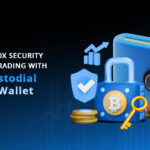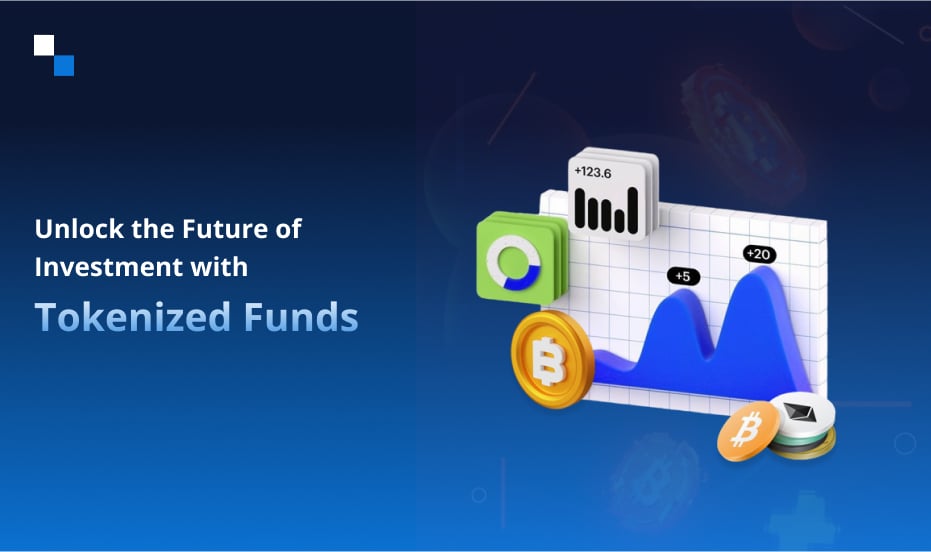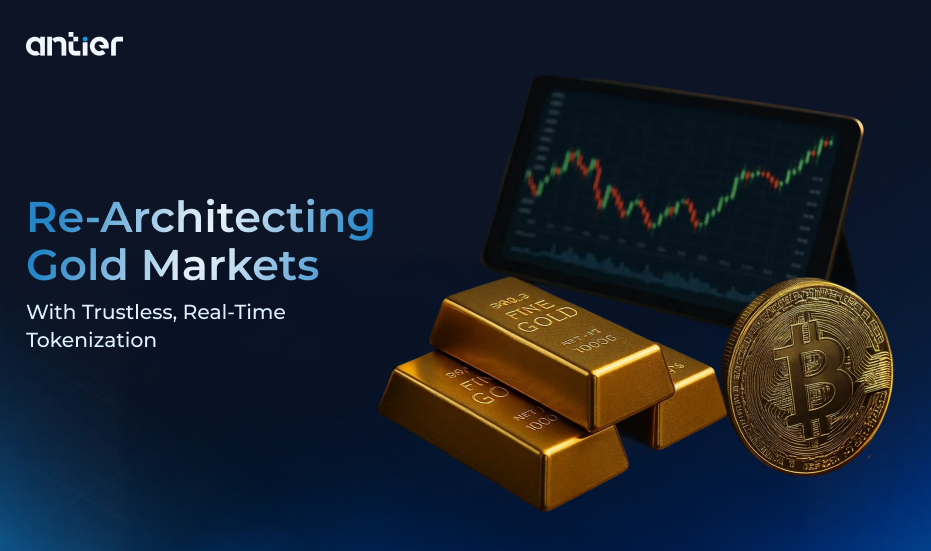In recent years, the world of finance has witnessed a major evolution, thanks to the growth of blockchain technology and digital assets. One of the most exciting innovations in this space is the emergence of tokenized funds. Tokenized funds are revolutionizing the way we think about traditional investment vehicles like mutual funds and ETFs (exchange-traded funds). In this blog, we’ll explore what tokenized funds are, how they work, and compare them to traditional financial products like mutual funds and ETFs.

What Are Tokenized Funds?
Tokenized funds are essentially traditional investment funds (such as mutual funds or hedge funds) that are represented and traded using blockchain-based tokens. These tokens can represent a share or unit in a fund, enabling investors to access a fractionalized and digital version of a fund’s portfolio. In simpler terms, tokenized funds bring the concept of tokenization – the process of converting real-world assets into digital tokens on the blockchain – to the realm of investment funds.
Here’s a breakdown of what makes tokenized funds unique:
- Digital Representation: The ownership of a tokenized fund is represented by blockchain tokens, making it easier to buy, sell, and transfer ownership.
- Fractional Ownership: Tokenization allows investors to own fractions of a fund, lowering the barrier to entry and enabling more people to participate.
- Transparency: Blockchain’s inherent transparency means that investors can track the performance and holdings of a tokenized fund in real-time.
- Global Accessibility: Tokenized funds are accessible to anyone with an internet connection and a digital wallet, eliminating geographic and regulatory barriers to investment.
- Automation and Efficiency: Smart contracts can be used to automate key fund management functions like payouts and rebalancing, making tokenized funds more efficient and cost-effective compared to traditional funds.
How Tokenized Funds Work?
To create a tokenized fund, the traditional fund assets (such as stocks, bonds, real estate, or even cryptocurrencies) are pooled together. The fund manager then issues digital tokens that represent fractional ownership of this pool. These tokens are traded on blockchain networks, allowing buyers and sellers to transact seamlessly without intermediaries like brokers, custodians, or clearing houses.
For example, imagine a tokenized real estate fund. An investor purchases a token that represents ownership of a portion of the properties in the fund’s portfolio. The token can be bought or sold on a blockchain-powered platform, and any income generated by the properties (e.g., rental income) is distributed automatically to token holders via smart contracts.
Advantages of Tokenized Funds
- Liquidity: One of the major drawbacks of traditional investment vehicles like mutual funds or private equity funds is their lack of liquidity. Tokenized funds solve this issue by offering greater liquidity. Since tokens can be traded on blockchain platforms 24/7, investors can enter or exit positions at any time, unlike mutual funds that typically only settle once a day.
- Lower Fees: Tokenized funds can eliminate intermediaries, such as brokers and custodians, which lowers the cost of management and trading. This leads to lower overall fees for investors compared to traditional funds.
- Transparency: Blockchain provides an immutable ledger of transactions, which means that investors can access real-time information about the performance of the fund, the holdings, and any transactions made. This degree of transparency is often lacking in traditional investment products, where fund managers have more discretion in their reporting.
- Global Reach: Tokenized funds can be accessed by anyone with an internet connection, making them truly global. This opens up investment opportunities to a wider pool of investors, particularly those in regions with limited access to traditional financial markets.
- Fractionalization: By breaking down investments into smaller digital tokens, tokenized funds allow investors to own a fraction of a larger investment portfolio. This fractionalization lowers the entry barriers for retail investors who may not have enough capital to buy into large-scale traditional funds.
Tokenized Funds vs. Traditional Investment Products
Now, let’s compare tokenized funds with two of the most well-known traditional investment products: mutual funds and exchange-traded funds (ETFs).
Tokenized Funds vs. Mutual Funds
1. Trading Hours and Liquidity:
- Mutual Funds: These are typically only traded once per day, with the price set at the close of the trading day (NAV or Net Asset Value). This means that if you want to buy or sell shares, you can’t do so instantly and must wait until the end of the trading day.
- Tokenized Funds: On the other hand, tokenized funds can be traded 24/7, giving investors immediate liquidity. Blockchain-based trading platforms allow transactions to occur in real-time, meaning you can buy or sell tokenized assets at any hour.
2. Fees:
- Mutual Funds: Mutual funds often have management fees, front-end or back-end loads, and other administrative costs. These fees can be high, particularly in actively managed funds.
- Tokenized Funds: Because tokenized funds cut out many intermediaries, fees are generally lower. The use of smart contracts for automation and transparency further reduces administrative costs.
3. Transparency:
- Mutual Funds: While mutual funds provide periodic reports on their holdings and performance, they are not as transparent in real-time. Investors may have to wait for quarterly or annual reports, and there’s often limited visibility into day-to-day portfolio management.
- Tokenized Funds: Blockchain technology offers full transparency, allowing investors to see transactions, asset allocation, and fund performance on an ongoing basis.
4. Accessibility:
- Mutual Funds: Some mutual funds have minimum investment requirements that can be prohibitive for retail investors. Additionally, they may only be accessible to residents of certain countries due to regulatory restrictions.
- Tokenized Funds: Tokenized funds can be accessed globally by anyone with a digital wallet and internet access. They also allow for fractional ownership, which lowers the capital required to participate.
Tokenized Funds vs. ETFs
1. Trading Flexibility:
- ETFs: ETFs are traded on stock exchanges like individual stocks, meaning you can buy and sell them throughout the trading day. They are more liquid than mutual funds but still bound by market hours.
- Tokenized Funds: As mentioned earlier, tokenized funds can be traded 24/7 on blockchain platforms, making them more flexible than ETFs in terms of trading hours.
2. Fees:
- ETFs: ETFs generally have lower management fees than mutual funds because they are passively managed in most cases. However, there are still some administrative costs associated with maintaining the fund.
- Tokenized Funds: Tokenized funds, by cutting out intermediaries, typically have even lower fees than ETFs. Moreover, using blockchain technology for transaction processing reduces costs related to fund management.
3. Transparency:
- ETFs: While ETFs do offer transparency in terms of holdings and performance, the information is typically not real-time, and investors may have to rely on periodic reports or exchanges for detailed updates.
- Tokenized Funds: The blockchain provides continuous transparency, giving token holders the ability to access up-to-date data on fund performance and asset allocation at any time.
4. Regulation:
- ETFs: ETFs are highly regulated financial products, subject to the rules of the stock exchange and financial regulatory bodies like the SEC. This offers a level of security and oversight that many investors are familiar with.
- Tokenized Funds: Tokenized funds, while increasingly becoming more regulated, are still operating in a relatively new regulatory environment. As such, the level of oversight can vary depending on the jurisdiction and the specific tokenized fund.

Conclusion: The Future of Investment
Tokenized funds are an exciting development in the world of finance, offering several advantages over traditional investment vehicles like mutual funds and ETFs. By leveraging blockchain technology, tokenized funds bring greater liquidity, lower fees, and enhanced transparency to the investment landscape. While there are still regulatory challenges to overcome, the potential of tokenized funds to democratize investing and offer new opportunities to a global audience is undeniable.
As blockchain technology continues to evolve and become more widely adopted, tokenized funds could become a mainstream investment product that complements or even disrupts traditional mutual funds and ETFs. Investors should keep an eye on this space, as tokenized funds may play a key role in the future of finance.
Frequently Asked Questions
01. What are tokenized funds?
Tokenized funds are traditional investment funds, such as mutual funds or hedge funds, that are represented and traded using blockchain-based tokens, allowing for fractional ownership and easier transactions.
02. How do tokenized funds work?
Tokenized funds work by pooling traditional fund assets and issuing digital tokens that represent fractional ownership, which can be traded on blockchain networks without intermediaries.
03. What are the benefits of tokenized funds compared to traditional funds?
Tokenized funds offer benefits such as digital representation, fractional ownership, transparency, global accessibility, and increased efficiency through automation and smart contracts.







